Language History
Alutiit’stun—Like an Alutiiq
Alutiiq is the ancestral language of the Kodiak Archipelago, with deep connections to the languages of western Alaska. Like all languages, Alutiiq has changed over the centuries with the introduction of new languages to Kodiak, the adoption of a writing system, and the influences of educational systems.
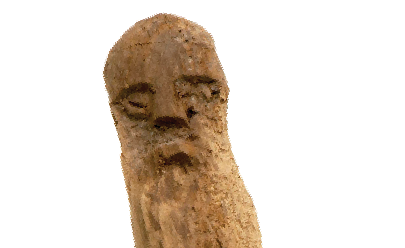
Tool handle, Koniag, Inc Collection, Kalruk One.
Visual Messages
For thousands of years, Alutiiq people used symbols, pictures, materials, and colors to share messages. A carefully embroidered parka showed respect for the animals used in its construction. The size and shape of a labret (lip plug) recorded the age and family of its wearer. The color green showed a connection with the powerful spirit world. The design of every object told a story.
For example, faces carved on tool handles reminded craftsmen about the human-like consciousness of all things, including everyday objects like tools and materials.

Petroglyphs from site XTI-124, Cape Alitak, drawing by Sven Haakanson Jr.
Petroglyphs
Alutiiq ancestors carved petroglyphs, images pecked into boulders and rock faces, to record stories and mark harvesting areas. This set of petroglyphs shows a group of faces—perhaps members of a family or a group of ancestors.
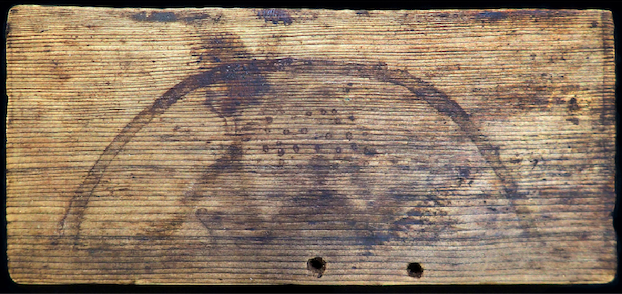
A painting on a box panel showing an erupting volcano, Koniag Collection, Karluk One.
Painting
People also preserved history in stories told, memorized, and passed through the generations. Painted scenes helped to record and share stories. This box panel has a painted image of an exploding volcano. It is about 450 years old.
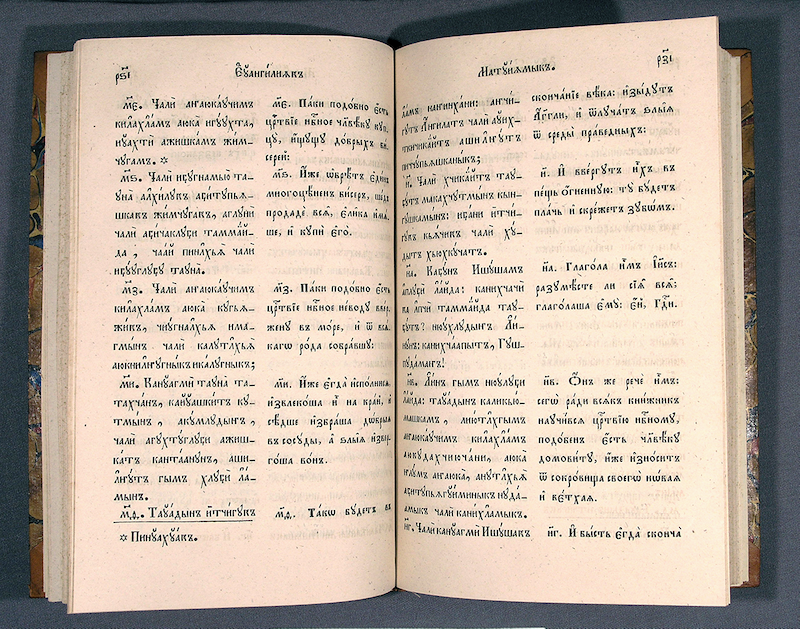
The Gospel of St. Matthew, 1848, Synod Press, St. Petersburg, Russia. Translated by church reader Il’iia Tyzhnov. Printed in parallel columns of Alutiiq (left) and Slavonic (right).
Written Alutiiq
Alutiiq men trained in Russian schools made the first written records of the Alutiiq language. They developed an early alphabet using Cyrillic characters and translated religious texts into Alutiiq.
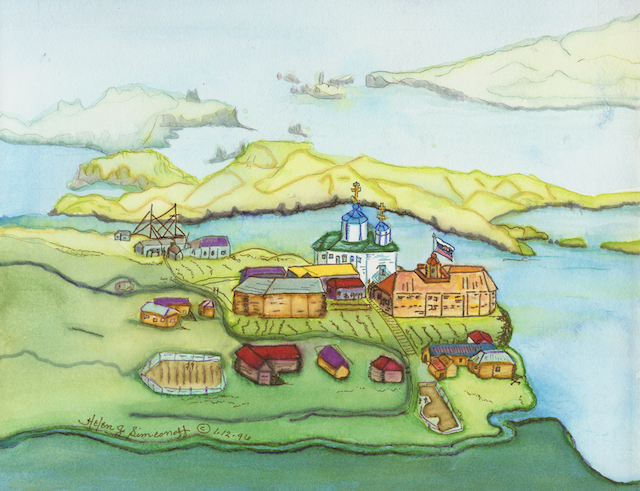
View of Kodiak, watercolor by Helen Simeonoff, 1996, showing the Russian building in 1798.
New Languages
The conquest of Kodiak in the eighteenth century brought new languages. Traders introduced Russian and clergy taught Slavonic, the language of the Russian Orthodox Church. In the 19th century, many Alutiiq people spoke multiple languages—Alutiiq with family, Slavonic at church, and Russian in the community. English became common in the late 1800s, with the purchase of Alaska by the United States.

Ouzinkie school, ca. 1940. Hender Toms collection, Courtesy Melinda Lamp.
Schools
American schools and missionaries enforced English-only policies that prohibited young people from speaking Alutiiq and punished those who disobeyed. To protect their children, parents began speaking English at home. They reserved Alutiiq speech for private, adult gatherings and few young people learned the language. The result was a rapid decline in the number of speakers. In 2010, there were just 45 first language Kodiak Alutiiq speakers. Today, there are 20. Most are elderly
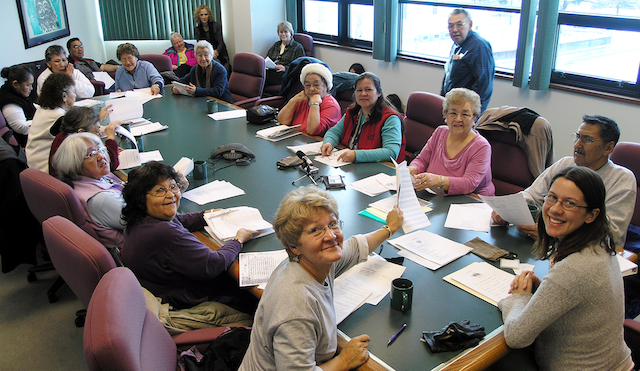
Elder speakers and language learners meet in Kodiak, 2010.
Reawakening
Preserving the Alutiiq language is a cornerstone of the heritage movement, and thanks to twenty years of diligent work, the sounds of Alutiiq are returning to Kodiak. Through numerous projects, Elders, tribes, and organizations have documented the Alutiiq language, created new Alutiiq words for modern items, and taught a new generation of speakers.
Today, there are Alutiiq language classes at Kodiak College and Kodiak High School and resources to support language learners. Games, radio shows, dictionaries, books, recordings, and websites are all helping to reawaken Kodiak’s first language.
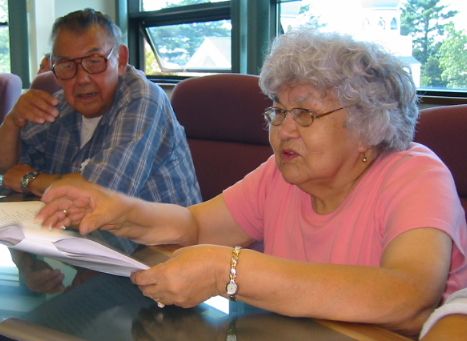
Elder speakers and teachers Nick Alokli and Sophie Katelnikof Shepherd, 2010.
Elder Teachers
Alutiiq Elders make language learning possible. They mentor learners, share their voices for educational recordings, help community members pick Alutiiq names for programs and places, and develop new words—like computer (umiartusqaq) or cafeteria (nerwiguaq)—for modern discussions. Their knowledge is precious and their commitment to sharing is greatly valued.
Produceds with support from the Kodiak Community Foundation.
